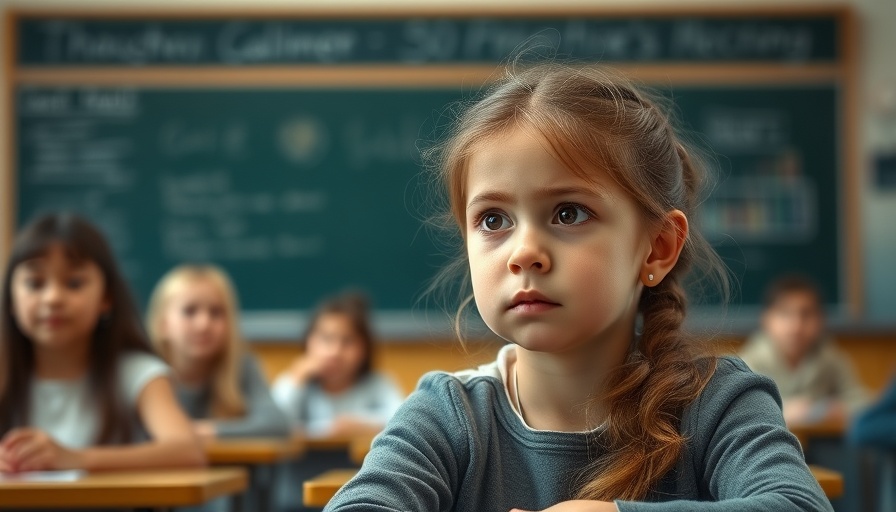
The Growing Concern Over School Bullying
As parents, we strive to create a safe environment for our children, one free from the dangers of bullying. In recent years, bullying has increasingly come to the forefront of educational discussions. In Singapore, the Ministry of Education (MOE) has initiated a comprehensive review of bullying incidents within schools, aiming to gather insights and feedback from parents and educators alike. By addressing these concerns, the MOE acknowledges that cooperative efforts among stakeholders are crucial in combating the issue effectively.
What's Being Done: The MOE's Review Process
Starting earlier in 2025, the MOE's approach seems to embody a promising shift towards collaboration. The inclusion of parents and educators in the next phase of this review indicates a more holistic strategy compared to prior measures. This will not only empower parents to express their concerns about their children's experiences in school but also foster a constructive dialogue among educators about the ways to create supportive environments in classrooms.
Why Parental Involvement Matters
Parents' engagement in the educational landscape is invaluable. Research has consistently shown that when parents participate in school initiatives, children exhibit improved behavior and academic performance. Moreover, gathering perspectives from parents who often witness the ramifications of bullying firsthand can provide essential insights into the emotional toll it takes on their children. The MOE's outreach efforts are a positive step in fostering this involvement.
Schools' Role in Preventing Bullying
Educators hold significant responsibility in preventing and addressing bullying. This involves not only identifying bullying behaviors but also implementing effective intervention strategies. The MOE's initiative allows educators to reflect on their existing policies and procedures to ensure they are equipped to support students who might be struggling with bullying. Alongside existing frameworks, training sessions on emotional intelligence and conflict resolution could also arm teachers with important skill sets.
Enhancing Student Well-Being: A Community Effort
Combating bullying requires more than just a response from educators and parents; it demands a community-wide approach. Educational institutions, families, and the community at large need to collaborate on proactive strategies. From organizing workshops focused on building resilience among students to promoting initiatives that cultivate empathy, every voice contributes to this critical discourse. Schools can act as the bridge that connects parents and community resources, allowing for shared responsibility.
Real-World Effects of Cyberbullying and Mental Health
In our digital age, cyberbullying presents unique challenges. The advent of social media has allowed for bullying to extend beyond the schoolyard, affecting students' mental health significantly. According to recent studies, victims of both traditional and cyberbullying report higher levels of anxiety, depression, and other emotional distress. Education and prevention programs that educate students on recognizing harmful behaviors can help mitigate these effects.
Building an Inclusive Culture in Schools
Developing a school culture that emphasizes respect and inclusion is essential. When students feel accepted and understood, bullying behaviors diminish. Efforts like school-wide assemblies, peer mentoring programs, and student-led anti-bullying campaigns create dialogue about the importance of kindness. The MOE's new policies could integrate these elements, ensuring that schools not only react to bullying incidents but also take steps to cultivate positive interactions from the start.
Looking Forward: The Importance of Continued Dialogue
As the MOE moves forward with their review process, it is crucial for all parties to maintain open channels of communication. Parents, educators, and students should not only provide feedback but also stay informed about the developments in this initiative. By sharing stories, experiences, and suggestions, they can collectively shape the educational environment into one that prioritizes safety and well-being.
If you're a parent, your voice matters in this vital conversation about bullying and student well-being. Stay engaged, participate in discussions, and work alongside educators to foster the safe, inclusive spaces your children deserve. Together, we can build a community where every child feels valued and supported.
 Add Row
Add Row  Add
Add 




Write A Comment